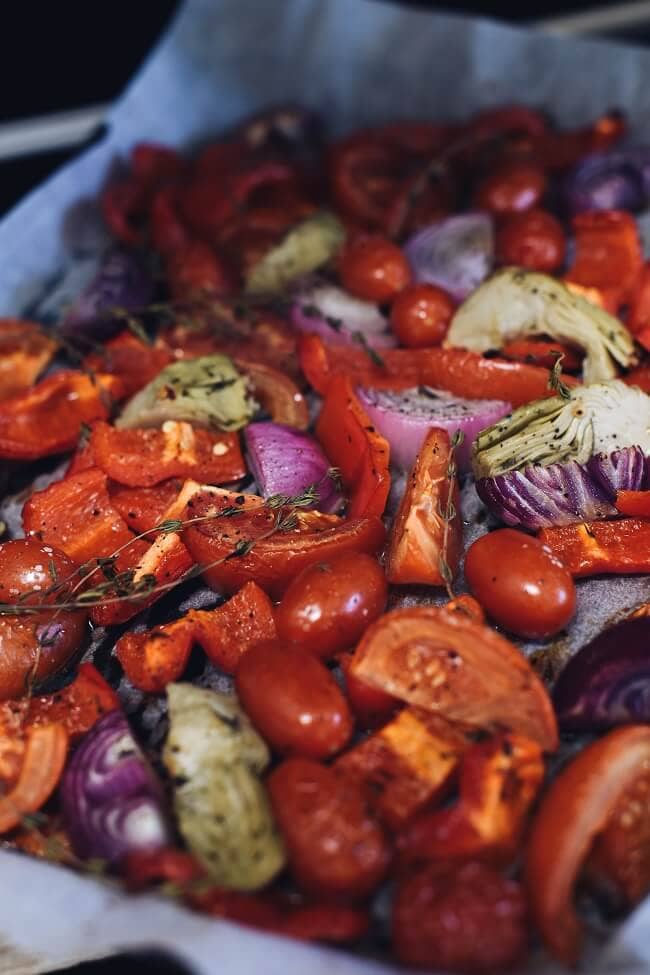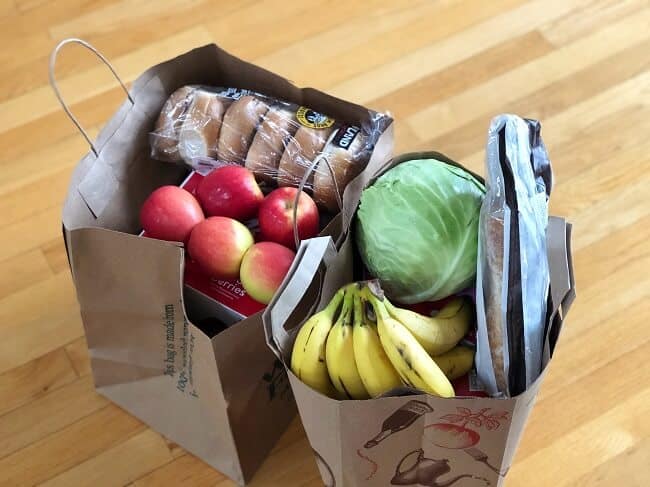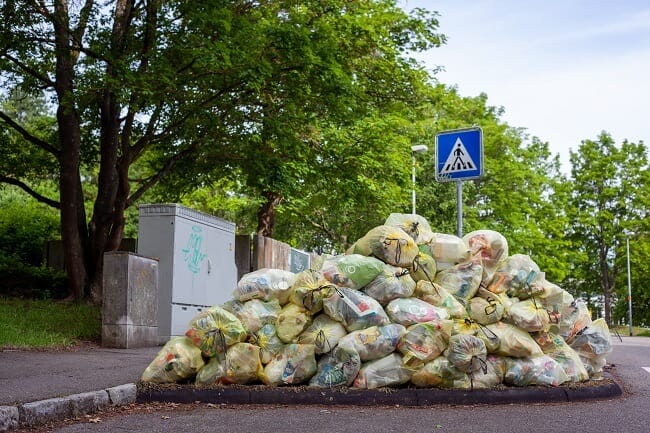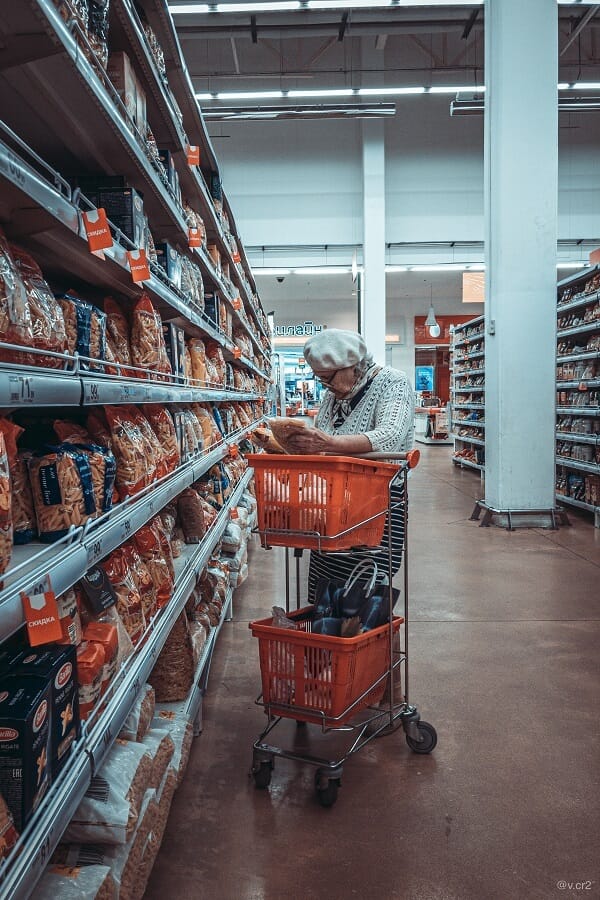Food Waste Statistics and Facts

The impact of food waste food waste is a problem. According to the United States Department of Agriculture (USDA), 30-40% of the USA food supply goes to waste. This amounts to about $161 billion worth of wasted food.
Globally, the impact of food waste is also a major issue. The United Nations Food and Agriculture Organization (FAO) estimates that about one-third of all food produced in the world is lost or wasted. This amounts to about 1.3 billion tons of food per year, with a value of around $1 trillion.
Food Waste and its Impact on the Environment
Food waste has significant environmental, economic, and social consequences. When food is wasted, the resources that went into producing, processing, and distributing that food are also wasted. This includes water, land, energy, labor, and other inputs. In addition, food waste is a major contributor to greenhouse gas emissions, as decomposing food in landfills releases methane, a potent greenhouse gas.
Reducing food waste can help to conserve resources, reduce greenhouse gas emissions, and improve food security by making more food available to those who need it.
Reducing food waste is important for a number of reasons:
Environmental: Food waste is a major contributor to greenhouse gas emissions, as decomposing food in landfills releases methane, a potent greenhouse gas. Reducing food waste can help to reduce these emissions and protect the environment.
Economic: Food waste is a significant problem in terms of economic cost. According to the United States Department of Agriculture (USDA), food waste in the United States is worth about $161 billion. Reducing food waste can help to save money and reduce the burden on the economy.
Social: Reducing food waste can help to improve food security and ensure that more people have access to enough food to eat. According to the United Nations Food and Agriculture Organization (FAO), about 821 million people around the world suffer from hunger, and reducing food waste could help to feed more of these people.
Easy Ways to Reduce Food Waste in Your Own Kitchen

Here are a few tips for planning your meals to reduce food waste:
Make a grocery list: Planning your meals and making a grocery list can help you only buy what you need, reducing the risk of food going to waste.

Use up ingredients you already have: Before you go shopping, check your pantry, fridge, and freezer for ingredients you already have on hand. This can help you plan meals around what you already have, reducing the risk of those items going to waste.
Plan for leftovers: When you’re making a meal, try to make a little extra to have as leftovers the next day. This can help you reduce food waste by using up ingredients that might have gone to waste otherwise.
Get creative with recipes: If you have certain ingredients that are about to go bad, try to find recipes that use those ingredients. This can help you use up ingredients before they go to waste.
Use a meal planning app: There are many apps and websites that can help you plan your meals, such as Mealime or Paprika. These apps can help you generate a grocery list based on the meals you want to make, making it easier to only buy what you need.
“Waste Not, Want Not: Creative Ways to Store Food and Leftovers to Reduce Food Waste

Proper food storage can help to reduce food waste by helping food last longer. Here are a few tips for storing food properly:
Store fruits and vegetables in the right part of the fridge: Different types of fruits and vegetables should be stored in different parts of the fridge to keep them fresh for as long as possible. For example, leafy greens should be stored in the crisper drawer, while berries should be stored in a covered container.
Freeze items that you won’t be able to use right away: Freezing is a great way to store food for a longer period of time. Just be sure to wrap items properly to prevent freezer burn.
Use airtight containers: Airtight containers can help to keep food fresher for longer by keeping out air and moisture.
Store dry goods in a cool, dry place: Dry goods like flour, rice, and pasta should be stored in a cool, dry place to keep them from going rancid or attracting pests.
Use the first in, first out method: When you have multiple packages of the same item, be sure to use the oldest one first. This can help to reduce food waste by ensuring that you use the items that are most at risk of going bad first.
Fighting Food Waste: Strategies for Using Leftovers to Reduce Food Waste

Here are a few ideas for using leftovers to reduce food waste:
Turn leftovers into new meals: One of the easiest ways to use leftovers is to turn them into new meals. For example, you can make a soup out of leftover vegetables, or use leftover rice to make fried rice.
Freeze leftovers: If you won’t be able to use your leftovers within a few days, consider freezing them. This can help to extend the shelf life of the food and reduce waste.
Get creative with recipes: There are many recipes that are designed specifically for using up leftovers. Consider doing a search online for ideas, or try using a recipe app like SuperCook, which allows you to enter the ingredients you have on hand and generates recipe suggestions.
Share with friends and family: If you have a lot of leftovers and don’t think you’ll be able to use them all, consider sharing them with friends or family. This can help to reduce food waste and ensure that the food gets used.
Donate: If you have non-perishable leftovers that you won’t be able to use before they expire, consider donating them to a local food bank or soup kitchen. This can help to reduce waste and provide food for people in need.
The Final Option: Composting to Reduce Food Waste

Composting is a great way to reduce food waste by turning it into nutrient-rich soil that can be used to grow new food. Here are a few steps for getting started with composting:
Choose a composting method: There are several methods for composting, including backyard composting, vermicomposting (using worms to break down the material), and bokashi composting (using microorganisms to ferment the material). Decide which method is right for you based on your space, resources, and preferences.
Set up your composting system: Depending on the method you choose, you’ll need to set up a compost bin or container, and gather the necessary supplies. For example, if you’re doing backyard composting, you’ll need a bin or pile, a composting tumbler, or a composting worm bin.
Add the right mix of ingredients: To create a healthy compost, you’ll need to add a mix of “green” and “brown” materials. Green materials are rich in nitrogen and include things like food scraps, grass clippings, and coffee grounds. Brown materials are rich in carbon and include things like dry leaves, straw, and wood chips. Aim for a mix of about 30% green materials to 70% brown materials.
Keep your compost moist and well-aerated: Compost needs moisture and air to break down properly. Be sure to add enough water to keep the compost damp (but not waterlogged), and turn or aerate the compost regularly to help it break down.
Harvest your compost: Once your compost is ready, you can use it to enrich your soil and grow new plants. Be sure to use it within a few months, as the nutrients in the compost will begin to break down over time.
Make a Difference: Donate Your Excess Food
Donating non-perishable food that you won’t be able to use before it expires is important because it can help to reduce food waste and provide food for people in need. Here are a few reasons why this is important:
Reducing food waste: When food is wasted, all of the resources that went into producing, processing, and distributing that food are also wasted. Donating non-perishable food that you won’t be able to use helps to ensure that those resources are not wasted.
Providing food for those in need: Many people around the world do not have enough to eat, and food banks and other charities rely on donations to help feed those in need. By donating non-perishable food that you won’t be able to use, you can help to provide food for people who are facing food insecurity.
Supporting your community: Donating food is a way to give back to your community and make a positive impact. It can help to build a sense of connection and support among community members and can be a way to make a difference in the lives of others.
In summary, donating non-perishable food that you won’t be able to use before it expires is important because it helps to reduce food waste, provide food for those in need, and support your community.
Reducing Food Waste in Restaurants
Food waste is a significant issue in the restaurant industry, with estimates suggesting that restaurants waste a significant amount of food each year. According to the Environmental Protection Agency (EPA), restaurants in the United States generate around 11.4 million tons of food waste each year, which is approximately one-third of all food waste generated in the country. This food waste has environmental, economic, and social consequences, as it represents a waste of resources and contributes to greenhouse gas emissions.
There are several factors that contribute to food waste in restaurants, including overproduction, plate waste, and spoilage. Some restaurants have implemented strategies to reduce food waste, such as using portion control, donating excess food to organizations that can use it, and composting food waste. However, more work needs to be done to address food waste in the restaurant industry and to reduce the environmental, economic, and social impacts of this waste.
From Farm to Table: How to Reduce Food Waste Throughout the Supply Chain
Food waste is a significant issue in the farming industry, with estimates suggesting that a significant amount of food is wasted at various stages of the food supply chain, including production, processing, distribution, and consumption. According to the United Nations Food and Agriculture Organization (FAO), around one-third of all food produced in the world is wasted, which has environmental, economic, and social consequences.
There are several factors that contribute to food waste in farming, including crop losses due to pests and diseases, food that is rejected due to cosmetic imperfections, and food that spoils due to inadequate storage or transportation. In addition, some food is wasted due to overproduction or changes in consumer demand.
To address food waste in farming, it is important to adopt practices that reduce food waste at all stages of the food supply chain. This may include improving production and harvesting techniques, implementing better storage and transportation systems, and reducing food waste at the consumer level. Additionally, efforts to reduce food waste should be integrated with efforts to reduce food insecurity and address other issues related to the food system.
Conclusion: Reducing Food Waste

In conclusion, there are many ways to reduce food waste. Here are a few ideas:
- Plan your meals and make a grocery list: This can help you only buy what you need, reducing the risk of food going to waste.
- Store food properly: Proper storage can help food last longer. For example, store fruits and vegetables in the right part of the fridge, and freeze items that you won’t be able to use right away.
- Use leftovers: One of the easiest ways to reduce food waste is to turn leftovers into new meals. For example, you can make a soup out of leftover vegetables, or use leftover rice to make fried rice.
- Compost: If you have food that you can’t use, consider composting it. This will turn the food into nutrient-rich soil, which can be used to grow new food.
- Donate: If you have non-perishable food that you won’t be able to use before it expires, consider donating it to a local food bank. This will help reduce waste and provide food for people in need.
Pingback: Adaptation strategies for farmers to improve food security amid climate change - Ecological Crusader
Comments are closed.